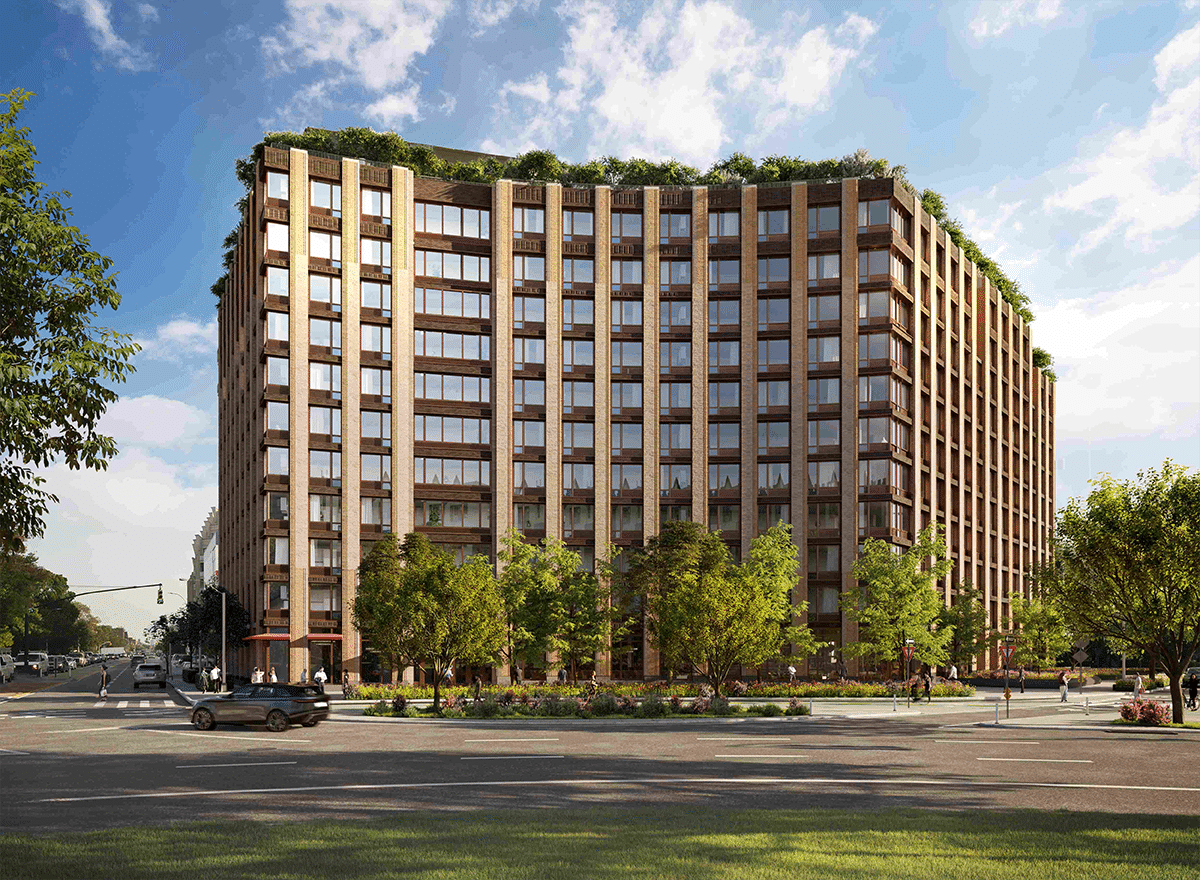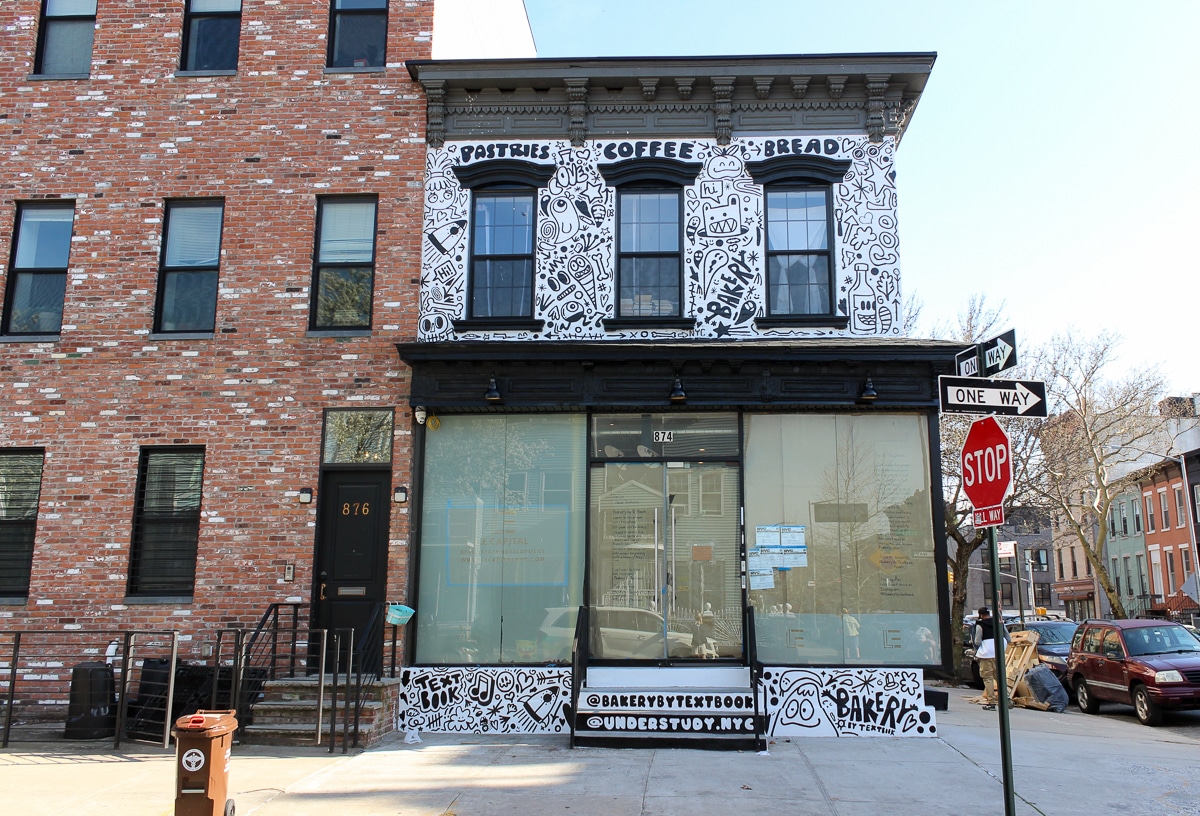Building of the Day: 88-94 Decatur Street
Brooklyn, one building at a time. Name: Flats buildings Address: 88-94 Decatur Street Cross Streets: Throop Avenue and Marcus Garvey Boulevard Neighborhood: Stuyvesant Heights Year Built: 1889 Architectural Style: Romanesque Revival Architect: Sibell & Miller Other work by architect: St. Luke’s Episcopal Church, Sea Cliff, N.Y, as well as other buildings in the New York…

Brooklyn, one building at a time.
Name: Flats buildings
Address: 88-94 Decatur Street
Cross Streets: Throop Avenue and Marcus Garvey Boulevard
Neighborhood: Stuyvesant Heights
Year Built: 1889
Architectural Style: Romanesque Revival
Architect: Sibell & Miller
Other work by architect: St. Luke’s Episcopal Church, Sea Cliff, N.Y, as well as other buildings in the New York City area. Sibell only: 386 Macon Street, Stuyvesant Heights
Landmarked: Yes, part of the Stuyvesant Heights HD Extension (2013)
The story: This group of upscale apartments was built in 1889 at a time when developers were beginning to feature handsome multi-unit buildings in upper income neighborhoods as a viable alternative to row house living. This group of flats buildings was built the same year Montrose Morris’ Alhambra was built, and other architects such as the Parfitt Brothers were getting commissions for similar style structures. Most of their buildings were on prominent streets like Nostrand Avenue and Montague Street; this set of buildings is unique in that they are midblock, surrounded by single family houses.
The four flats buildings were designed by the firm of Sibell & Miller. Harry Gardner Sibell and Charles E. Miller were in partnership for only four years, from 1889 to 1893. This was one of their first commissions, and they did a great job. The two end buildings are mirror images of each other, and anchor the group, with large protruding cornices and a distinctive checkerboard brick pattern under the cornice brackets.
The two center houses are also twins, and feature a golden colored Roman brick façade, centered by the double story arched windows directly in the center. Unlike the surrounding row houses, these buildings have low stoops, with large arched windows on the ends, and arched doorways throughout. All in all, the group is extremely attractive, and unique to the district.
For many years, the entire group was advertised and marketed as a whole, and had a posh, English sounding name: the Lindsley Apartment Houses. By the ‘teens and early 1920s, that named had changed to the Bel Air Apartments. They were marketed to well-off people, and a look at local papers for all four buildings shows quite a varied cast of characters.
Most were pretty well off, and some were “known by Society.” There were weddings, parties, luncheons and funerals in the large, floor-through apartments, which had at least seven rooms, and all of the modern conveniences of the day. In 1890, an apartment rented for $45 a month, with steam heat, bath, and coal furnished for the range.
Chauncey Taylor was one of the residents of No. 92. He died in 1916, and was one of the oldest employees of the Irving National Bank. He had worked there for over 40 years. He left his widow and a 93-year-old father behind.
Robert Stewart also lived in this building. He was a prominent attorney. Another lawyer was William W. Lyon, who hailed from Buffalo, where he got his law degree. He had been a drummer boy during the Civil War, and grew up to become a lawyer and then a well-respected financial reporter for many different newspapers in New York. He lived, and died at the age of 61, at 90 Decatur. The Reverend James Mulcahey, a retired Episcopal priest, lived at 94 Decatur. He had been the rector at St. Luke’s Episcopal Church on Broadway, in Manhattan.
There were a number of miscreants living in these buildings as well, and of course, they are the most interesting. In 1923, a man with strong Celtic features, but with a hat pulled down over his eyes came up to a pair of plain clothes detectives having lunch across from the courthouse downtown. The man handed out a card reading in Hebrew-style lettering “I’m deaf and dumb. Please help me.” The detectives looked at him, and said, “You’re not Jewish,” and arrested him for vagrancy. When brought before the judge, he suddenly was healed, and told the judge his name was John Sullivan, and he lived at 90 Decatur Street. He thought he’d get more money if people thought he was Jewish. The judge sentenced him to six months at a workhouse.
Financial shenanigans abounded in 88 Decatur. In 1908, a broker’s clerk named Charles A. Bliven, who worked at E. F. Hutton, was arrested for swindling a client out of stock profits that were to go to an estate trust. He ended up getting four years in prison. Much earlier, in 1899, Benjamin S. Chadsey, an estate lawyer living at 88 Decatur, was charged with making off with similar stock profits from an estate he was managing. He was also accused of overcharging his clients. As the investigation into his affairs continued, he was found to have quite a few skeletons in his closet, and he did jail time as well. I may have to revisit his story at another time.
Over the course of the latter part of the 20th century, the buildings were sold separately, so today, 88 and 90 are owned by separate owners, while 92-94 are still joined under single ownership. I’ve been in No. 88 on several Bed Stuy house tours, and it is a beautiful building. Hopefully that’s still true for the others, as this is superior Bedford Stuyvesant housing stock, with, like all of our Brooklyn neighborhoods, an interesting past, present and future. GMAP
(Photo: Christopher D. Brazee for LPC)













What's Your Take? Leave a Comment